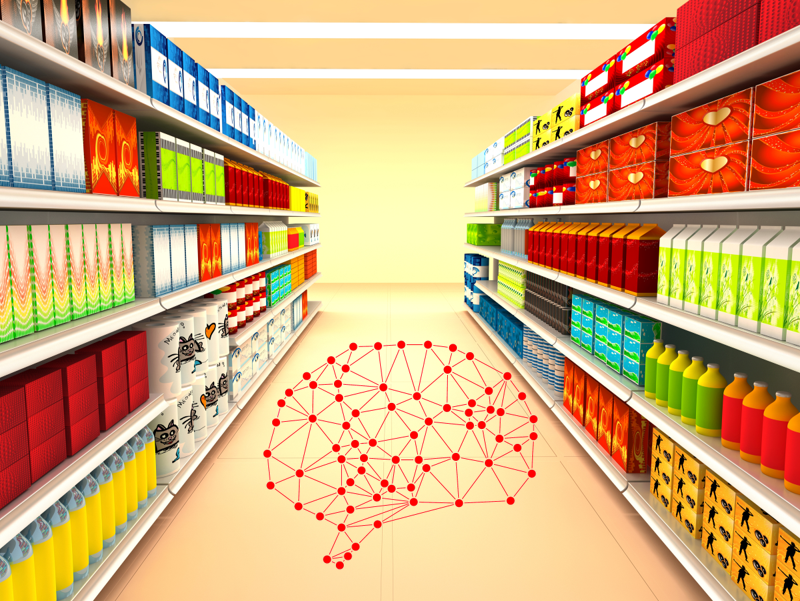In the digital age, shoppers have changed their shopping habits. Hundreds of malls are emptying and thousands of retailers are shuttering their brick-and-mortar stores. Grocers, however, are bucking these trends. It turns out, consumers of all ages still prefer to buy their groceries in brick-and-mortar stores. Reporting on a 2017 Market Track survey, Doug Harris, writes, “A majority of people prefer shopping in a physical store location rather than online, according to Retail Leader. The study also found 80% of shoppers would do online price comparisons.”[1] Concerning those results, Traci Gregorski, Senior Vice President of Marketing at Market Track, stated, “Even with consumers indicating their preference to purchase items in-store, the highly competitive online environment is impacting brick and mortar results. Decreases in profit margins can be attributed to shoppers being armed with more pricing and comparison information.” Increasing in-store sales often relies on optimized trade promotions as well as optimized day-to-day pricing. The initial challenge, even for big name brands, is getting placed on limited shelf space in the first place. In some cases, shelf space is getting even harder to find as supermarkets trade shelf space for in-store cafes and demonstration spaces to make in-store experiences more inviting.
AI in the grocer aisle
With so much competition and knowing consumers have in-store access to competitors’ pricing, establishing the right price for goods on the shelf can be tricky. Many grocers are turning to cognitive technologies (i.e., various artificial intelligence (AI) solutions) for help. Sandy Skrovan (@SandySkrovan) observes, “Price optimization tools can be a critical differentiator for retailers. It enables retailers to deploy dynamic pricing that can deliver higher margins and provide valuable data on consumer shopping patterns. Retailers can quickly gauge shopper reaction to different pricing strategies and reward their best customers with better prices. The ultimate goal from the retailer perspective: bottom-line improvement.”[2] Profitability, however, involves more than setting the price of goods. Companies often struggle to offer their customers the optimum product mix, at the right price, with the right features, to maximize category growth and profitability. The sheer scale of product/package combinations can overwhelm category management teams. Today, developing the right planogram is an expensive process and requires a high degree of manual effort. Truth be told, no amount of manual effort can keep up with the complexities of today’s category management system.
Add to that the complex nature of dynamic consumer decisions and the analytics required confound the abilities of traditional mathematics to isolate the effects of buying. At the same time, rising retail pressure continues to exert a downward pressure on profit margins. With cognitive solutions, like the Enterra System of Insight and Actions™, retailers can:
- Leverage unique and proprietary capabilities to model and disentangle complex interdependencies, as well as drive product margins including mix, price and features.
- Consider much broader data sets including consumer attitudes and environmental context (e.g., demographic, weather, climate, seasonality, etc.) in which decisions are made to improve insight accuracy.
- Solve for unique category solutions including multiple vendor products and funding.
Other cognitive solutions, like the Enterra Category Management Intelligence System™, can improve profitability by helping create a superior balance between product mix, price and features. Using these types of AI-powered solutions, retailers can enjoy improved gross margin return on investment. Customers are happy because they can find the products they want at prices they can afford. As Skrovan noted, grocers want to foster loyal customers and often provide their best customers with better prices. One way to that, of course, is with shopper loyalty programs. Mark Johnson (@MJohnsonLoyalty), CEO of Loyalty360, told Jessica Dumont (@JLDumont6), “The goal for loyalty programs is to be relevant and timely to consumers and their preferences, and to create a dialogue between the customer and the brand. So while grocery loyalty programs have been around for years, they may be more important than ever in today’s competitive landscape. The trick is crafting the right offering for today’s consumer.”[3] Loyalty programs provide some of the most important data grocers can use when implementing AI-powered optimization solutions.
“Today,” writes Sy Fahimi (@syfahimi), Senior Vice President of Product Strategy at Symphony RetailAI, “retailers experiencing strong, sustainable growth are investing in technologies that help them stay ahead of consumer preferences and competitive forces. Specifically, many are focusing on solutions that turn raw data into digestible and actionable insights quickly and cost-effectively.”[4] He is, of course, talking about AI-powered solutions, and he insists grocers need these solutions as much as any retailer. He continues, “Artificial intelligence enables the real-time analysis required to take advantage of each diverse factor that determines a profitable customer relationship. The actionability of your data makes all the difference, offering in-the-moment recommendations for improvement. Machine learning, then, extends the life of those insights by connecting the dots between predictions and outcomes, applying those learnings to future events as well.”
Concluding thoughts
Retailers want to know they are carrying the right products for their customers and providing them at attractive prices. Cognitive solutions can help achieve that goal. They can also help consumers get what they want. Harris concludes, “Shoppers want to be confident they are getting the best deal for the products they need, and can check prices from different retailers at the store or online in seconds. In order to keep shoppers coming back to physical stores, grocers need to find ways to reassure their customers of competitive pricing and offering the public a shopping experience they can’t get online.” Skrovan adds, “A study conducted by Forrester Consulting for Revionics found 78% of consumers agree with the use of science-based technology to determine prices, deeming it fairer than items priced arbitrarily by a merchant’s judgment. The study also found as many as 81% of consumers shop around for the best price. It’s this kind of statistic that makes it imperative for retailers to take appropriate measures — such as investing in price optimization technology — to make sure they’re right-priced. Otherwise, consumers will flock to a competitor, a loss retailers in today’s ultra-competitive environment cannot afford.” Optimizing pricing and stocking the right items matter — a lot. But, according to Dumont, there is something just as important. She explains, “A grocer’s brand identity may be the most important factor in whether or not customers remain loyal.” Give customers a good experience and offer them the right products at a good price and your brand identity should do just fine.
Footnotes
[1] Doug Harris, “Survey: Consumers prefer brick-and-mortar grocery stores to online shopping,” Food Dive, 3 April 2017.
[2] Sandy Skrovan, “Ahold turns to technology to find the right price,” Food Dive, 1 August 2017.
[3] Jessica Dumont, “Why customer loyalty programs are more important than ever,” Food Dive, 26 September 2018.
[4] Sy Fahimi, “Why Grocers Should Adopt AI and Machine Learning,” Progressive Grocer, 29 April 2019.





